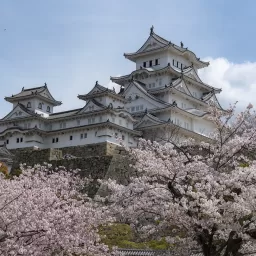Bamboo Furniture – A Look at the History, Properties, and Care of this Popular Wood Alternative
Bamboo and Bamboo Furniture:
Wood is a top choice when it comes to outdoor furniture materials, but unfortunately for many, it doesn’t come cheap. A single chair rarely goes for below $200, and an entire set can easily cost a few thousand dollars. But if you’re just after the look and feel of wood, there are also much cheaper options, such as bamboo. In fact, if you don’t consider furniture a big investment, bamboo may be much more practical. Read on to find out more.
History of Bamboo:
The Chinese were, and still are, the top users and producers of bamboo. Not surprisingly, the earliest bamboo products found–mostly household items and weapons–belonged to the Chinese some 7,000 years ago. Before paper was invented, the Chinese wrote on slips of bamboo, making it a key component in the spread of Chinese culture and language. Bamboo was also used for shoes, tiles, and coats, and remains a key ingredient in Asian cooking.
In the West, people were finding more interesting uses. Alexander Graham Bell’s first telephone was made of bamboo, and Thomas Edison used a bamboo filament to create the world’s first light bulb. Bamboo mats, bowls, blinds, and ornaments also became popular. Today, the use of bamboo has spread to the arts (sculpture, musical instruments), construction (doors, floors, houses), and even alternative medicine (bamboo shoots and juice).
Uses and Properties:
Bamboo is actually a type of grass with a hard, woody stem that reaches full height within a year or so. This makes it an ecologically sound resource; that is, heavy harvesting has virtually no impact on the environment. It is one of the fastest-growing plants on earth, which is why it remains abundant despite being used extensively for the last few thousand years.
The bamboo stem can be treated to form a lightweight but extremely tough wood-like material. When the strips are glued together, the resulting material is ideal for building structures, such as pillars and scaffolding. Many traditional houses are made entirely of bamboo, and bamboo suspension bridges are still found in parts of Asia.
How It’s Grown:
Bamboo grows in an invasive manner, with the roots quickly forming an underground network that is mostly self-sustaining. Nutrients from the leaves pass down the culms (visible stems) right down to the rhizomes, so that the grove remains alive even if the bamboos themselves die out. In fact, the effort is often on controlling bamboo growth than propagating it. Bamboo growers either prune the culms or install a physical barrier to keep it from invading adjacent lots.
The culms are the parts commonly used in manufacturing. After harvesting, the stems are cut lengthwise, boiled, and milled at the edges to flatten them out. The strips are then glued together, either edge to edge or face to face. In the former style, they are usually laminated together in three layers to make them thicker and sturdier. Finally, they are given a final pressing and milling to ensure structural bonding, and sometimes carbonized–exposed to high temperatures just below burning–for a richer, darker finish. The natural color is pale yellow to medium brown, and is equally attractive.
Bamboo Furniture:
Bamboo furniture has a light, earthy feel that is perfect for open areas like porches, patios and balconies. When properly constructed, it can have the same structural integrity as many hardwoods, but being a grass, it is much lighter and more versatile. Bamboo is a great choice if you like to move your furniture around or redesign your room once in a while.
Because of its high resistance, bamboo makes great storage pieces such as bookshelves and cabinets. The lighter varieties are commonly used for stools and dressers, while sturdier ones are made into larger tables and sofas. Many people accent their existing furniture with bamboo veneers, mats, and curtains.
The price of bamboo furniture has risen in recent years because of importation costs, as well as increasing demand from environmentally conscious buyers. Some varieties cost almost as much as wood. If you want something cheaper, try bamboo veneer furniture–these come with a solid wood interior and a bamboo outer layer.
Care and Maintenance:
Bamboo is sensitive to water, so take care not to over-wash it or leave it out in the rain. Clean it occasionally with a dry or damp cloth, and remove dust and grit with a mop or vacuum cleaner. Wipe off spills immediately to prevent stains and water marks. Also avoid scraping with steel wool or any abrasive–they can scratch the laminate and make it brittle.
You don’t have to be a serious conservationist to appreciate bamboo furniture. Its natural beauty makes it stand out even against the most expensive woods, and its neutral tones allow it to fit in with almost any theme. As long as you choose well and take good care of it, your bamboo furniture can give you excellent value for your money.
chinese garden
#Bamboo #Furniture #History #Properties #Care #Popular #Wood #Alternative
Will be pleased to have you visit my pages on social networking .
Facebook page here.
Twitter account is here.
Linkedin account here
Post byBedewy for info askme VISIT GAHZLY



